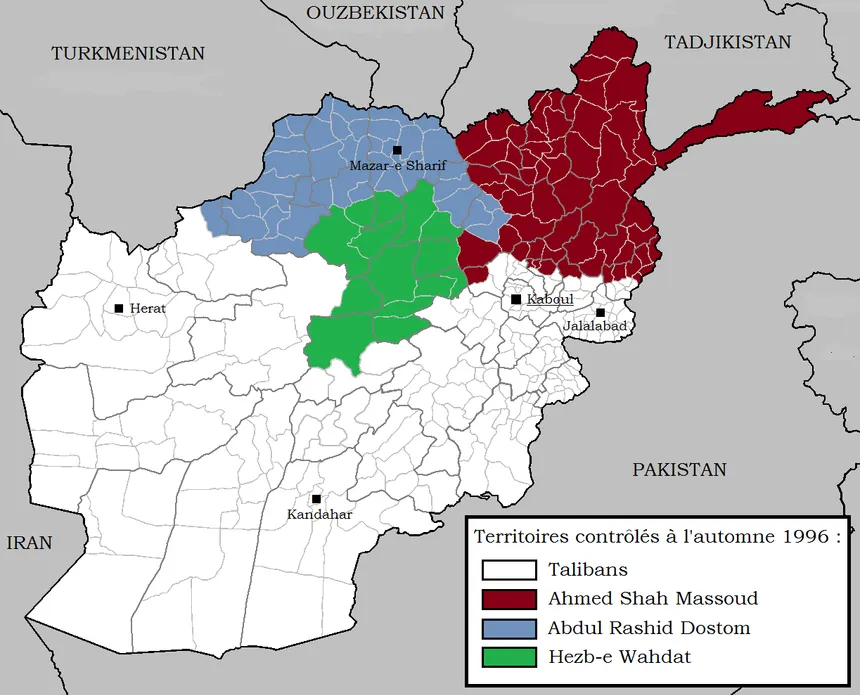The Historical Significance of Afghanistan: A Legacy of Resilience and Struggle (Part-2)
In the Previous Edition, we discussed about the history of Afghanistan and the Soviet's Influence on Afghanistan. In this Edition, we will discuss about the Soviet-Afghan War, The US's entry and finally about the Taliban.
Entry of the US
After the USSR attacked Afghanistan, the Afghan citizens were angry and joined the Mujahideen to retaliate. Meanwhile, the US felt embarrassed by the Soviet win and had few friends in Asia, mainly Saudi Arabia and Pakistan. To curb the Soviets from spreading their influence and to control Afghanistan, the US started fighting indirectly through a proxy war.
Soviet paratroopers in KabulThe US claimed the Soviet assault was an attack on Islam, galvanizing Islamic nations. They funded the Mujahideen with weapons, supplies, and money, training them in Pakistan with significant financial support.
The CIA from the US and the ISI from Pakistan set up an outfit called Maktab al-Khidamat. They urged people to join and fight the Soviets, enlisting many, including Osama bin Laden, Abdullah Azzam, and Omar Khadr, who were key in recruiting and strategy for the Mujahideen.
Areas controlled by different Mujahideen forces in 1985 Mujahideen praying in Shultan Valley, 1987They created Al Qaeda, where all recruits were funneled, enjoying unconditional backing from the US and the West.
The terrain in Afghanistan was a challenge for the Soviet forces, unadapted to the harsh weather and rugged landscape. Supplied with advanced weaponry from the US, including Stinger missiles that destroyed the Soviets' helicopters, the USSR's losses soared. After a decade of fighting, the Soviets began pulling out troops in 1988, completing their withdrawal by February 15, 1989, marking a regrettable chapter in their history.
Post-Soviet exit, internal factions fought for governance, leading to the Peshawar Accord in 1992 for power-sharing. Nonetheless, certain groups felt shortchanged, sparking conflicts and unrest, which led to a civil war that disturbed the nation's peace.
Rise of Taliban
Of the various factions of Mujahideen fighters, one subset hailed from the ranks of students—those from religious schools and madrasas. This collective emerged as the most formidable force. In Pashto, "student" translates to "Talib," and thus, they became known as the Taliban. Mullah Mohammad Omar, notable for his significant role in damaging the USSR, rose to prominence with his sharp intellect and swift decision-making skills. He ascended to the leadership of the Taliban, earning immense respect from religious scholars and leaders across the nation. Omar instituted Sharia law in Afghanistan.
Areas under the control of Taliban in 1996Osama bin Laden forged a strong alliance with Mullah Omar, and in 1996, when the U.S. urged Sudan to expel Osama, Omar sheltered him and his Al Qaeda affiliates in Afghanistan. This is where they conceived the notorious September 11 attacks. These actions incensed the U.S., which then demanded Osama’s extradition and the dismantling of Al Qaeda’s Afghan network. Mullah Omar refused, fearing the shame it would bring. Surrendering to U.S. demands would not only humiliate the Taliban but also diminish their standing among Afghan civilians.
When the Taliban asked the U.S. for proof of Osama's involvement in the 9/11 attacks, the U.S. refused to provide it. Even after the evidence was supplied, the Taliban still dismissed the U.S. demands to surrender Osama. The U.S. did not take this rejection lightly.
The US Invasion of Afghanistan
When talks with the Taliban broke down, the US, alongside its NATO partners, launched an attack on Afghanistan on October 7, 2001. The US and its allies targeted key Al Qaeda and Taliban sites with air strikes but hadn't yet deployed ground troops. The US cut off Afghanistan from outside help and supplies, naming this effort Operation Enduring Freedom.
The bombing campaign paused as US ground forces, including Army Delta Force, Navy Seals, and British SAS, engaged in combat. They took over Mazar-i-Sharif, a significant Taliban stronghold, on November 9 and by November 13, they had ousted the Taliban from power and taken control of important areas including Kandahar.
US Army upon arriving in Mazar-i-Sharif with Northern Alliance fighters on November 10The US entered Afghanistan with a clear goal: to eliminate Al Qaeda and capture Osama Bin Laden. However, Osama Bin Laden, along with Mullah Omar, managed to evade the US forces and remained hidden somewhere within Afghanistan.
By December 2001, the US helped establish a new government in Afghanistan. Hamid Karzai became president with over 55% of the vote, leading the Islamic Republic of Afghanistan. The US faced criticism for sidelining the Taliban, which upset many local Afghans.
In 2003, while still engaged in Afghanistan, the US invaded Iraq. Despite their efforts, US forces were unable to catch Osama Bin Laden.
Keep an eye out - this piece is sliced into three bits, with the last one dropping shortly!!
Credits - Aljazeera, Wikipedia, Britannica.














.png)
Comments
Post a Comment